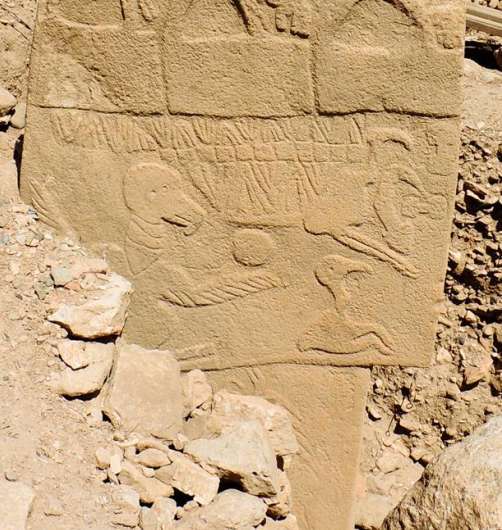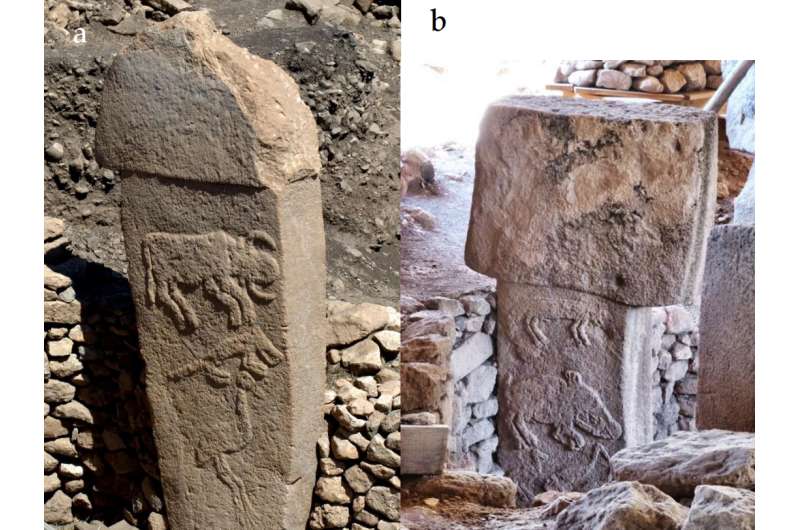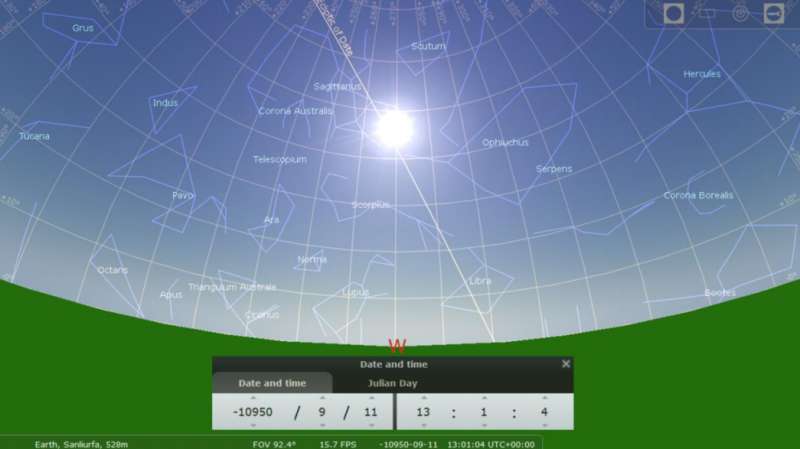April 24, 2017 report
Ancient stone pillars offer clues of comet strike that changed human history

(Phys.org)—A team of researchers with the University of Edinburgh has found what they describe as evidence of a comet striking the Earth at approximately the same time as the onset of the Younger Dryas in carvings on an ancient stone pillar in southern Turkey. The group has published their findings in the journal Mediterranean Archaeology and Archaeometry.
Prior evidence based on ice cores taken from Greenland has suggested that a strike by a comet may have led to the onset of the Younger Dryas—a period of Earth cooling that lasted for approximately 1000 years. Other evidence also suggests that the cooling period caused groups of people to band together to cultivate crops, leading to the development of agriculture, which in turn led to huge leaps in technological innovations and societal developments, i.e. Neolithic civilization. In this new effort, the researchers describe evidence they found on a stone pillar at Gobekli Tepe (the oldest known temple site) that aligns with the ice core findings—that a comet struck the Earth in approximately 10,950BC.
The pillar was created by the people of Gobekli Tepe and now appears to have served as a means of commemorating a devastating event—perhaps a comet breaking up and its remnants crashing into the Earth, causing an immediate environmental impact around the globe and possible loss of life (one of the characters on the pillar was of a headless human.) The team fed likenesses of the images carved onto the pillar (known as the vulture stone) into a computer to determine if they might be linked with constellations. Doing so revealed associations between characters on the pillar and astronomical symbols in the sky for the year 10,950 BC. The fact that the people took the time and considerable effort to create the characters on the pillar suggests something very important must have happened during the same time period that the Greenland ice core suggests a comet struck, approximately 10,890BC.

The researchers have concluded that the carvings on the pillar were likely meant to document the cataclysmic event and suggest that the temple may have been an observatory. They also report that they found evidence of changes to the Earth's rotational axis as a result of the comet strike.

More information: DECODING GÖBEKLI TEPE WITH ARCHAEOASTRONOMY: WHAT DOES THE FOX SAY? (pp.233-250). B. Sweatman, D. Tsikritsis, DOI: 10.5281/zenodo.400780 , www.maajournal.com/Issues2017a.php (PDF)
ABSTRACT
We have interpreted much of the symbolism of Göbekli Tepe in terms of astronomical events. By matching low-relief carvings on some of the pillars at Göbekli Tepe to star asterisms we find compelling evidence that the famous 'Vulture Stone' is a date stamp for 10950 BC ± 250 yrs, which corresponds closely to the proposed Younger Dryas event, estimated at 10890 BC. We also find evidence that a key function of Göbekli Tepe was to observe meteor showers and record cometary encounters. Indeed, the people of Göbekli Tepe appear to have had a special interest in the Taurid meteor stream, the same meteor stream that is proposed as responsible for the Younger-Dryas event. Is Göbekli Tepe the 'smoking gun' for the Younger-Dryas cometary encounter, and hence for coherent catastrophism?
© 2017 Phys.org


















